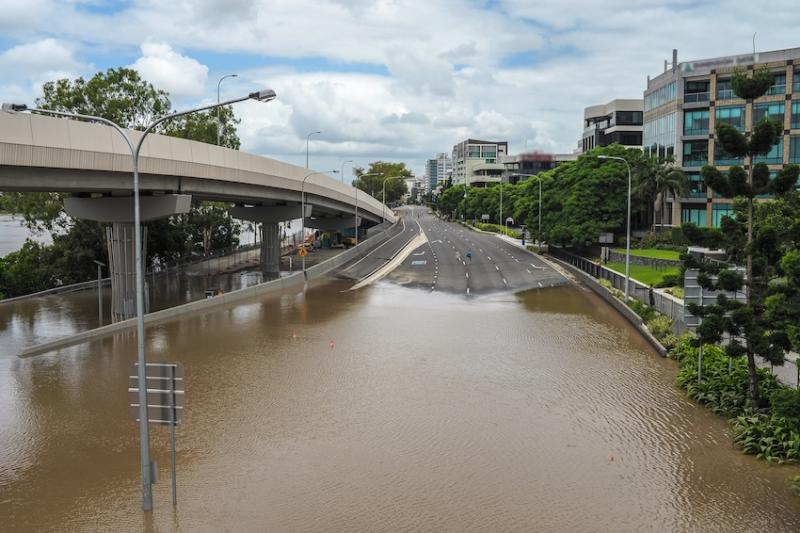We can't afford to delay action on educational opportunity

Mitchell Institute Director Dr Sara Glover outlines four ways we can extend educational opportunities to all young people in Australia.
This week the Mitchell Institute released Educational Opportunity in Australia 2015 – a landmark study examining how well our education system is preparing Australian children and young people for adult life.
This report provides compelling evidence that while the system performs well for many, overall one in four young people living in Australia are missing out on critical educational milestones, leaving them poorly equipped to take up opportunities for work, further study or training.
There has been a strong response to these findings. Many, including us, are disappointed to find such persistent inequity and disparity of educational opportunity in a country like Australia.
This Mitchell report tracked the progress of Australian children and young adults across four key milestones – entry to school, achievement at Year 7, Year 12 completion by age 19, and engagement in study, training or work at age 24.
Charting the progress of Australian students through these four milestones, from the early years right through to young adulthood, paints a powerful picture of how students fare and how well education prepares them. It also provides insights into differences between states and geographic areas, and by language, cultural and socioeconomic background.
The big picture
We found that at each of these educational milestones, around a quarter of young Australians are not on track – a depressingly consistent pattern.
At school entry, this quarter amounts to around 68,000 children not ready for learning and the opportunities school brings. By age 24 it means 93,000 young people are not fully engaged in work or study – a number that nearly fills the MCG each year.
It’s not hard to see the huge waste of potential and talent this represents, and the negative consequences for the individual students, their communities and the economy.
Education needs to be more future-oriented, and, more than ever, we need our education system to foster capable, curious, resilient and adaptable young people.
The good news is that some students who start behind do make up ground, and this is a testament to the great work of our teachers and their partnerships with families. It shows that targeted teaching and support does work.
Also encouraging is the extent to which vocational education and apprenticeships provide important opportunities – second chances – for many students who have left school early.
On the other hand, it’s clear that some students fall behind and never catch up, and while the research shows that those who fall behind can come from all parts of the community, students from low socioeconomic backgrounds are most likely to find themselves in this position.
For example, at age 19 around 40 per cent of students from the lowest socioeconomic background had not attained Year 12, compared with only around 10 per cent of students at the other end of the socioeconomic scale.
Equally alarming is the slipping performance of Australian students when we compare them internationally. The proportion of Australian 15 year olds who are top performers on international tests has significantly decreased (by 5 per cent) over the last 10 years.
What is most concerning is that Australia’s education system has failed the 10 per cent of young children who are developmentally unprepared at the start of school, and are still not on track at Year 7 and then each subsequent milestone.
As a nation we are struggling to develop the potential of every young person, struggling to keep up with our international peers and struggling to overcome the effects of disadvantage through education. We cannot be satisfied with this.
What can we do about it?
There’s no silver bullet. What’s needed is a sustained and consistent approach from all governments – federal and state.
At the Mitchell Institute we see four clear priorities emerging.
1. Reinvigorate the purpose of education
Education needs to be more future-oriented, and, more than ever, we need our education system to foster capable, curious, resilient and adaptable young people.
We need to equip all young people with a set of capabilities that will help them constantly learn and grow and thrive in and beyond school. They need to learn how to solve problems, build capacity to be persistent and creative, to learn from mistakes and work towards long term goals. These are the skills necessary to succeed in today’s changing world.
It is encouraging to see that Victoria has set ambitious targets in these areas – the first Australian jurisdiction to do so. This recognises that these kinds of capabilities are no longer ‘nice to haves’. They are ‘must haves’, for all students, and should be at the heart of our education system.
2. Make pre-school early learning & development a top priority
While there has been progress in the last decade, as a nation we are lagging behind other countries in this area.
It’s time to see early childhood services as a child’s entitlement to early learning and development, not just childcare for working parents. Early childhood education should be as important as schooling – acknowledging that quality learning is play based, and that children are developing socially and emotionally as they acquire language and cognitive skills.
It is vitally important that all children benefit from early learning and development – yet currently, those who would benefit most, are least likely to be able to afford it, access it or participate.
3. Sustain quality learning for each child as they progress
Schools with more choice over how they design their curriculum and assessment can provide a learning experience that inspires each child – the kind of learning that builds motivation, confidence and engagement as well as the necessary capabilities.
Some of the most promising practices we’ve seen are where there is close collaboration between schools, with families and diverse partners including the tertiary sector, business, community organisations and global connections to bring learning to life and connect the pathways for young people. We can and need to do much better at linking education and training with the local services and coordinating supports for children and families.
While we know there are leaders and teachers in schools working hard to achieve these changes across the country, we are currently leaving this to chance, and up to each school to find their way.
At Mitchell we’d like to see schools, their leaders and teachers, and teachers in training, given the highest quality support to create schooling for the future, designed to meet each child and young person at their points of need.
4. Direct resources to where they are needed most
Last but by no means least, education providers cannot tackle the considerable challenges outlined here and respond to every child without adequate resources.
New South Wales has led the way on this, by increasing funding and better targeting it to need. Victoria has recently announced a boost to funding for students who need extra help, and we know other jurisdictions are changing school resourcing too.
However, when we look at the big picture across the country it’s not enough. We need fairness, transparency and a strategic approach to resource allocation across the whole education system.
To improve the number of young people achieving each of the milestones, we need to think about our investment across the entire continuum from early years to post school.
The needs-based school funding model recommended by the Gonski Review of School Funding remains the ‘unfinished business’ of Australian education policy, as its widely supported approach has not been implemented wholly or consistently across the country. The principles it outlined remain an important blueprint for a more equitable funding system for the future.
Of course schooling is only one part of the picture. To improve the number of young people achieving each of the milestones, we need to think about our investment across the entire continuum from early years to post school.
Governments currently do this very poorly, as evidenced by the persistent disinvestment in vocational education and training over the past decade charted in previous Mitchell work. This is happening despite the important role we know VET plays for many people throughout their lives, particularly those from disadvantaged backgrounds.
This is only reinforced by our latest research, which found that nearly 70 per cent of early school leavers enrolled in VET training, and almost one in two early school leavers had completed a VET qualification by their early 20s. This shows the pivotal role VET plays in the transition from school to work for many young Australians.
We need to be ambitious for every child
Investing in education is an investment, not only in each young Australian, but also in our collective future.
More resources are needed, but that’s only the start. There are many examples of schools and education providers doing a great job, and many students thrive, but sadly many do not.
The cost of getting this right is a fraction of the high cost we all bear when our education system falls short of the mark and fails to provide the educational opportunities we rightly expect in a country such as ours.
The challenge is not just to foster good schools, but to create education systems that ensure quality educational opportunities are available to all children and young people, regardless of their background or where they happen to live. This means policy settings that transcend rather than entrench disadvantage, and provide all students with the capabilities they need now and into the future.
Findings by milestone
At each milestone we asked two key questions:
Firstly, who’s on track and who’s missing out? This tells us how well equipped young people are at each of these stages, and whether they have the skills and capabilities to take advantage of the opportunities presented by the next stage of their lives.
Secondly, how well does the education system promote recovery between each milestone? This shines a light on our education system across the country, allowing us to see where it’s performing well and where it’s letting us down.
At school entry age 4 – 5, we found 22 per cent of children started school behind in their learning and development – that’s around 68,000 children in one year. Children who didn’t access early childhood education prior to school were more likely to start behind, so were those from disadvantaged backgrounds.
At Year 7 at age 12 – 13, we found 28 per cent of Australian students had not met the literacy and numeracy benchmark according to international standards. This rose to 50 per cent for students from low socioeconomic backgrounds.
At age 19, we found 26 per cent of young people had not attained Year 12 or its equivalent (a Certificate III or above), and only 61 per cent of students from low socioeconomic backgrounds had attained Year 12, compared to nearly 90 per cent of the most advantaged students. We found Year 12 attainment also varied greatly across the country, with location, including state or territory, and whether or not a student lived in a metro or regional area, making a big difference.
At age 24, we found 26 per cent of young Australians were not engaged in full-time education, training or work. That equates to around 93,000 young people, and nearly 40 per cent of 24 year olds from disadvantaged backgrounds were in this category.
Why choose these milestones?
We chose these four major milestones because they paint a very clear picture of young people’s progress in education from early years right through to young adulthood. How well equipped are young people at each of these stages? – are they equipped to take advantage of the opportunities in the next stages of their lives?
Feature image by Rupert Ganzer, Flickr.



